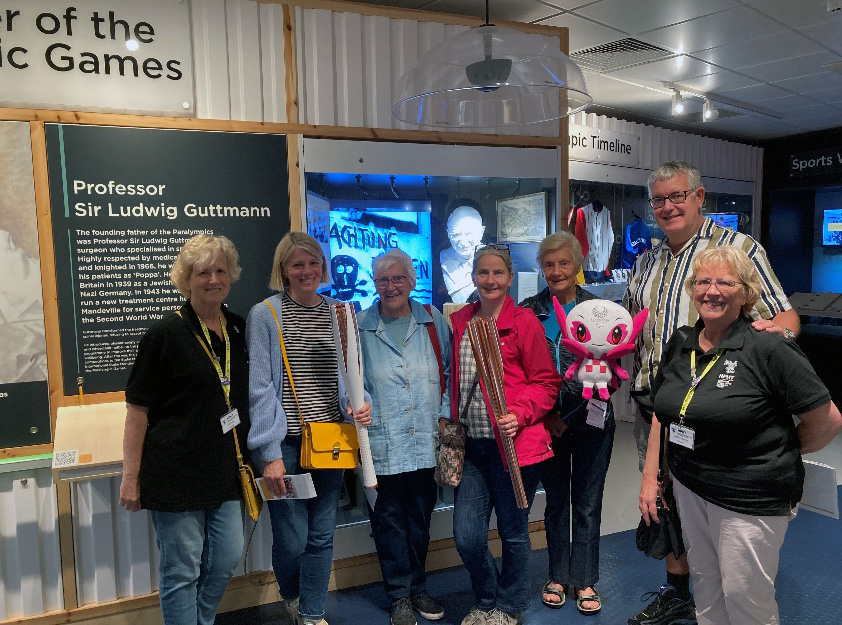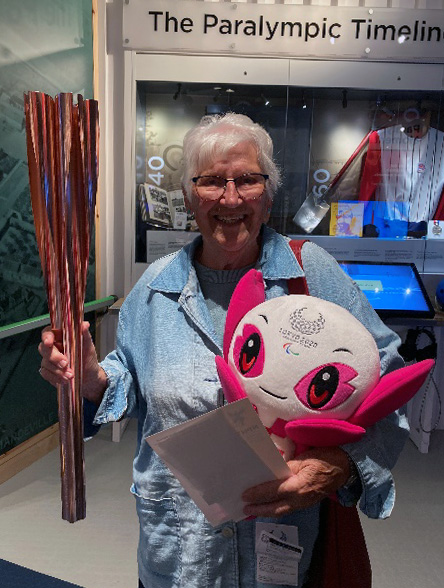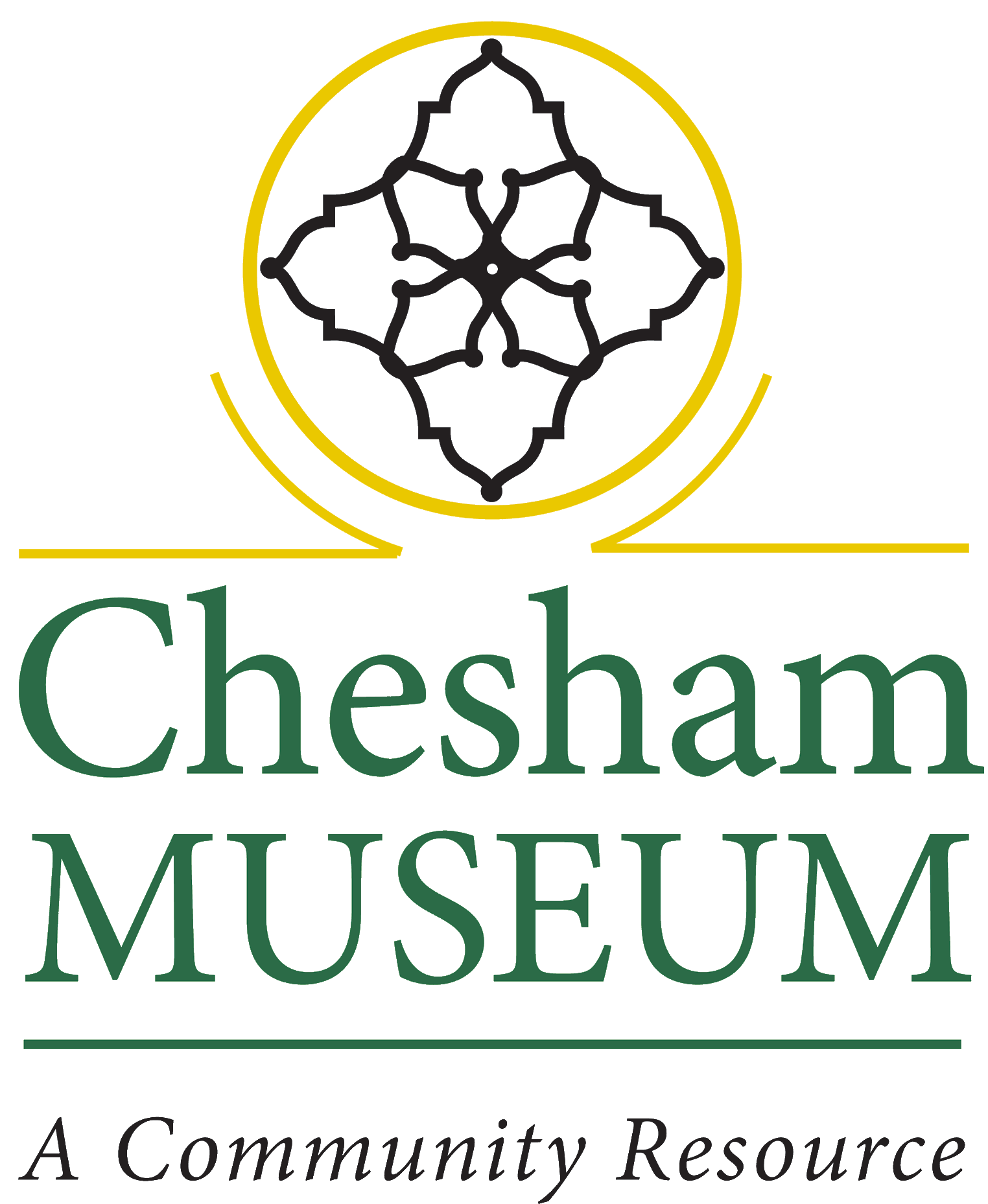Your Chesham – August update
Volunteers afternoon outing

On the 1 July a small group of Chesham Museum volunteers were lucky enough to have a guided tour of the National Paralympic Heritage Trust. Our trip organised by our museum mentor Emily Toettcher was partly a fact-finding mission to see how a small museum can work in a tiny space and to learn about the Paralympic movement itself.
Our guides were the lovely Gill and Judy, both very knowledgeable about their museum and very passionate about spreading the word of the heritage centre and the Paralympic movement.
The museum can be found inside the Stoke Mandeville Stadium Gutterman Centre which is open to the public. The museum is free to visit and well worth the trip – a guided tour is recommended though as there are some displays in the spinal unit which could be missed.
We found out about Professor Sir Ludwig ‘Poppa’ Guttmann CBE FRS who is known as the father of the Paralympic movement; he was the medical pioneer who proved that disabled sport could be as competitive and exciting as non-disabled sport. In September 1943, he took charge of the National Spinal Injuries Unit at Stoke Mandeville. He implemented his own theories on how best to treat patients who had paraplegia by introducing rehabilitation through sport.
From the first games, held at Stoke Mandeville with 16 participants onto national competitions. Then onto the first ‘international’ competition at Stoke Mandeville which occurred on the 26 July 1952, when a small team from the Military Rehabilitation Centre at Aardenburg near Doorn in the Netherlands competed against a number of British teams, and finally the Paralympic Games. The Paralympic Games has since become the third largest sporting event in the world.
It was interesting to see the development of various wheelchairs and how they have been adapted over the years for different sporting events. One was a bucket seat on wheels which didn’t seem to have any cushioning at all, it couldn’t have been very comfortable! Now we see the incredible equipment our Paralympic heroes such as David Weir and Paul Cartwright are able to compete with.

We were also lucky enough to be able to hold some of the torches used in the opening ceremonies of the Paralympic Games, they all vary so much in size and weight too, some of them were very heavy and must have been tricky to hold them for any great length of time.

They also had a number of mascots that each country who hosts the games produce. The photo shows the latest mascot for the Paralympic Games to be held in Paris in 2024, the mascot is a little amputie Phrygian cap with a blade, that embodies the French spirit and French values.
From the Heritage Centre we were taken to see the welcoming figure of Sir Professor Ludwig Gutterman who stands outside the National Spinal Unit, he maybe have been short in stature but has been a giant figure in the Paralympic movement.

The displays in the entrance hall of the spinal unit were also very interesting and how they made use of a small space. It was this and other ideas of secret cupboards for storage that also impressed us. Ideas we’ll surely be using when we finally get some premises for Chesham Museum.
Needless to say, a visit to this lovely small yet perfect museum is highly recommended. You can find out more about the place, the people and the history of the Paralympic movement at their website.


